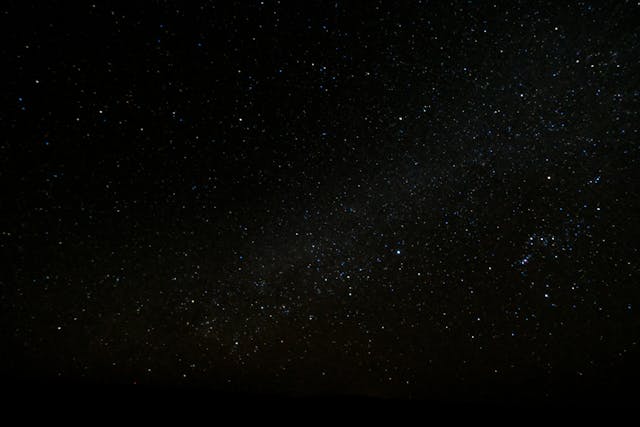
How many atoms are there in the vacuum of space? Technically, in a true vacuum, there would be zero atoms, but it is impossible to make a completely true vacuum. There will always be some atoms. In intergalactic space, there are 0.3 atoms per cubic meter, on average. Obviously, some areas of space have an awful lot more.
A vacuum is defined as “a space entirely devoid of matter”. In space, you would think that the gaps between the solar systems would fit this bill, but they don’t. There is no way of knowing exactly how big the universe is because we can only see a small part of it. And therefore, there is no way of working out how much matter is in the universe. Astronomers can guess at how much matter is in the bit of the universe we can see, and it is a lot. That matter tends to clump together in certain places. A few molecules might stick together, and they’ll attract more molecules, and slowly, matter will accumulate. Once the gravity grows strong enough, it brings in more matter, and the process continues. As the amount of matter increases, the gravity and the pressure increase, causing the gases to start burning and stars to form. Because the matter clumps together in certain areas, there is far more matter in some places than others, but that doesn’t mean that some parts of space have no matter. That would be a true vacuum, and a true vacuum is actually impossible to make.
One of the problems with trying to make a vacuum is what Aristotle summed up with “nature abhors a vacuum”. The closer you get to a vacuum, the lower the pressure is. Pressure is created by particles colliding with or pushing down on something. The more particles you have and the closer they are together, the greater the pressure you will have. If you could make a perfect vacuum, which you can’t, then it would have zero pressure. The problem is that liquids, gases, and even energy move from areas of high pressure to areas of low pressure. That is what Aristotle meant by nature abhors a vacuum. If you can get the pressure to zero, all of the particles from the surrounding area will move in until the pressure is equalized.
A true vacuum is impossible to make because there is no way to remove all of the energy. There is a base level of energy all through the universe, and it is in every single part. This energy is called the cosmic microwave background (CMB), and it is the leftover radiation from the Big Bang. This radiation is made up of photons, and those photons are the most common particles in the universe. There may not be any atoms in that space, but there is energy, and energy is mass. This took a while for me to get my head around, but mass and energy are the same thing. Energy can be converted into mass, and mass can be converted into energy. There may not be any particles or atoms in the part of space we are looking at for the time being, but if there is mass there, particles could appear. So long as there is energy, it is not a perfect vacuum.
So, how can you get rid of the energy? Well, you can’t. Energy cannot be created or destroyed. That is the first law of thermodynamics that we have learned about. However, the second law of thermodynamics is entropy, and the photons that make up the energy in the universe will slowly spread out as the universe keeps expanding. You might find, at some point far in the future, that there are bits of space with fewer photons than there are now, but it still wouldn’t be empty and still wouldn’t be a true vacuum. And then, of course, there is all the dark energy and the dark matter that we cannot see.
So, the majority of space has roughly 0.3 atoms per cubic meter. As you cannot have 0.3 of an atom, that means there is one atom in one cubic meter and no atoms in the next two. That is about as close to a vacuum as it is possible to get. It is also much better than anybody can do on Earth. The best vacuum that anyone has ever made on Earth was at CERN, and they managed to get down to 1 molecule per cubic centimeter. That is good, but it is a long way from intergalactic space. And this is what I learned today.
Sources
https://www.space.com/is-the-vacuum-of-space-truly-empty
https://www.discovermagazine.com/the-sciences/taking-the-measure-of-nothing-in-the-universe
https://physics.stackexchange.com/questions/161107/why-is-it-impossible-to-have-a-perfect-vacuum
https://cosmosmagazine.com/science/physics/vacuum-decay-the-ultimate-catastrophe
https://en.wikipedia.org/wiki/Vacuum_energy
https://energyeducation.ca/encyclopedia/Mass-energy_equivalence
https://en.wikipedia.org/wiki/Cosmic_microwave_background
https://www.sciencefocus.com/space/whats-the-most-abundant-particle-in-the-universe
https://www.bbc.co.uk/bitesize/articles/zgh3ydm#zn6ysk7
Photo by Francesco Ungaro: https://www.pexels.com/photo/starry-sky-998641/
